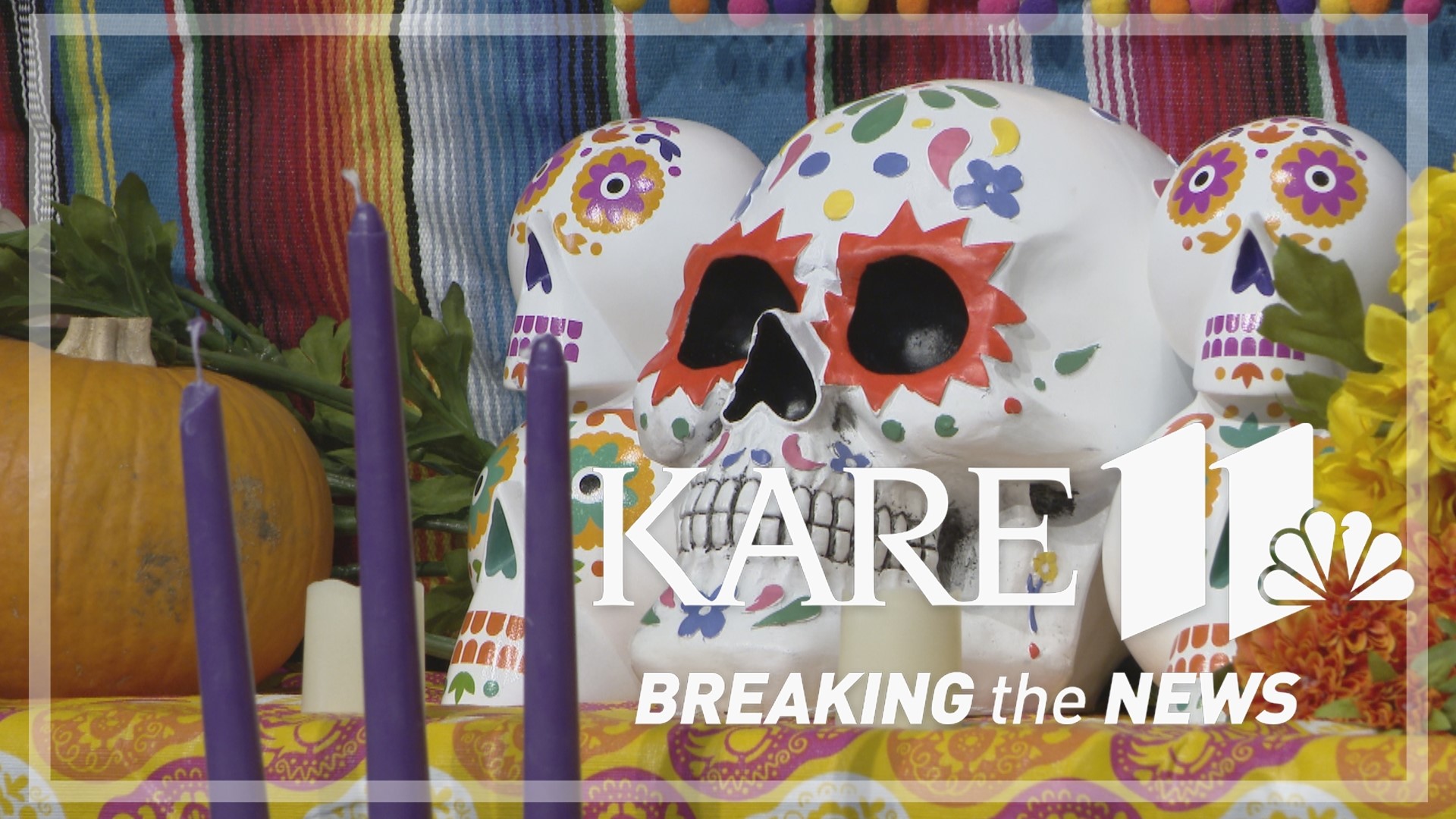ST PAUL, Minn. — On Oct. 31, kids and parents alike prepare to make the rounds in their neighborhoods, donning Halloween costumes and getting their fill of candy.
But after the costumes are put away for the year, many Latino cultures celebrate Día de los Muertos — or Day of the Dead — on Nov. 1 and 2.
One way it's celebrated is through the construction of an "ofrenda," or an altar dedicated to the dead. The ofrenda at the University of St. Thomas this year was built by the students of the HOLA Club (Hispanic Organization for Leadership and Achievement), in the hopes that more people will learn about Día de los Muertos.
St. Thomas' ofrenda is big and has a variety of items, each symbolizing something important.
"We have a lot of marigolds here as you can see, which is usually what we used to guide those lost souls to come to the ofrenda," Lucy Lezama Espinoza said. "Typically, what's on the ofrenda is actually food, water; we also use the papel picado to signify the air element."
Lezama Espinoza is a third-year student at St. Thomas. As a Mexican American, she said she grew up with ofrendas in her home. She explained that the whole point of an ofrenda is to attract the souls of loved ones, inviting them to come feast. It's also a reminder to them that they have not been forgotten.
"It's important to remember those we have lost because they're a part of our identity as well," Lezama Espinoza said. "Because [in] our culture, it's very important — our ancestors mean a lot to us. To be able to celebrate them in life and death is a way to honor them and their presence and their life and their experience."
Cesar Mendez, the president of the HOLA club, said he'll be celebrating his grandmother.
"My grandmother passed away two months ago. Now is the time for me to remember all the good things she did; to remember her favorite food, her favorite things to do," he said. He added that she liked beer and cheese.
And while his family grieved his grandmother, he said Día de los Muertos is not supposed to be sad.
"It's a celebration," he said. "As you can see, there are different colors; it's very vibrant. There's a lot of things happening and it's a celebration because our ancestors are here with us today," he said.
The ofrenda and the day-of celebrations culminate into an earthly way of sending a heavenly "I love you," perhaps much sweeter than any Halloween candy could ever be.
"I think Halloween is a way of dressing up and going out, but here, it's to stay in," Lezama Espinoza said. "[To] feel your relatives, feel the presence. I feel like that's something I felt growing up a lot. Having ofrendas at home, I could in a sense — maybe because a picture was up — there was food that reminded us of them. But for me, I could sense it, and having them present is the amazing part about it."
And it's the more the merrier when it comes to the celebrations.
"The Latino demographic here in Minnesota is growing, so people are getting to notice, and getting to know what's happening," Mendez said.
The ofrenda will stay up at the Anderson Student Center on campus until Friday.
Watch more Breaking The News:
Watch all of the latest stories from Breaking The News in our YouTube playlist:

